Tutto come da descrizione, venditore eccellente.
Ver traducciónDutch Captain Westerling Memoirs - 1st edition - Guerilla Warfare - Depot Special Troops - Indonesian Independence Combat - Westerling - KNIL - 1952
N.º 92482557
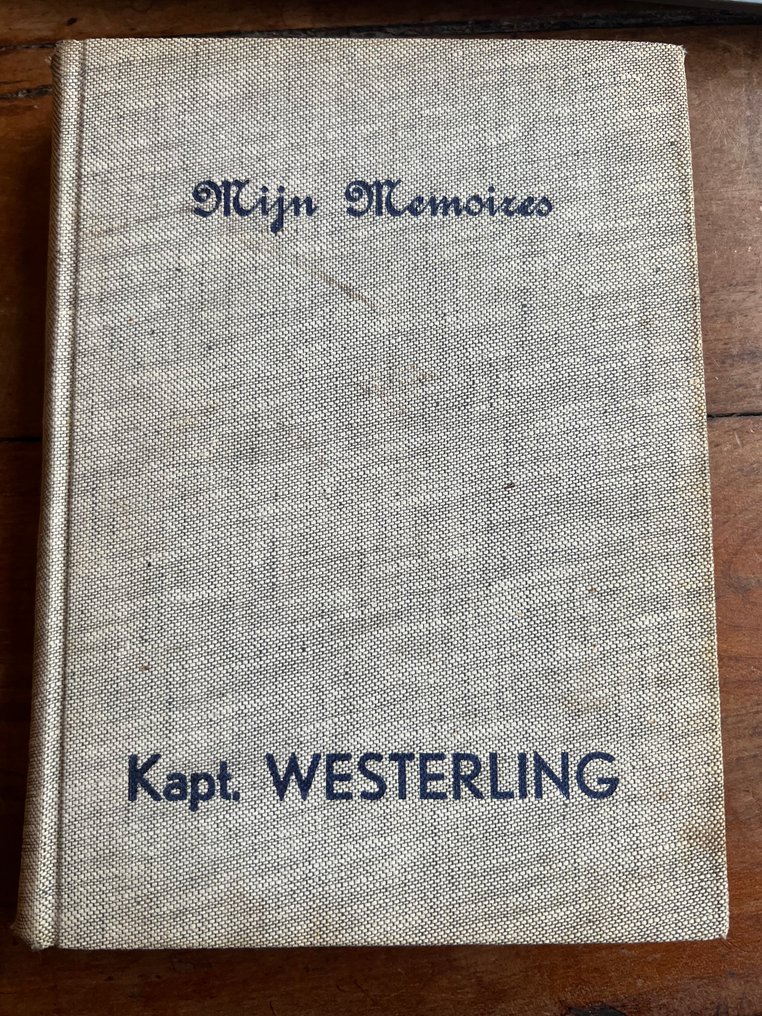
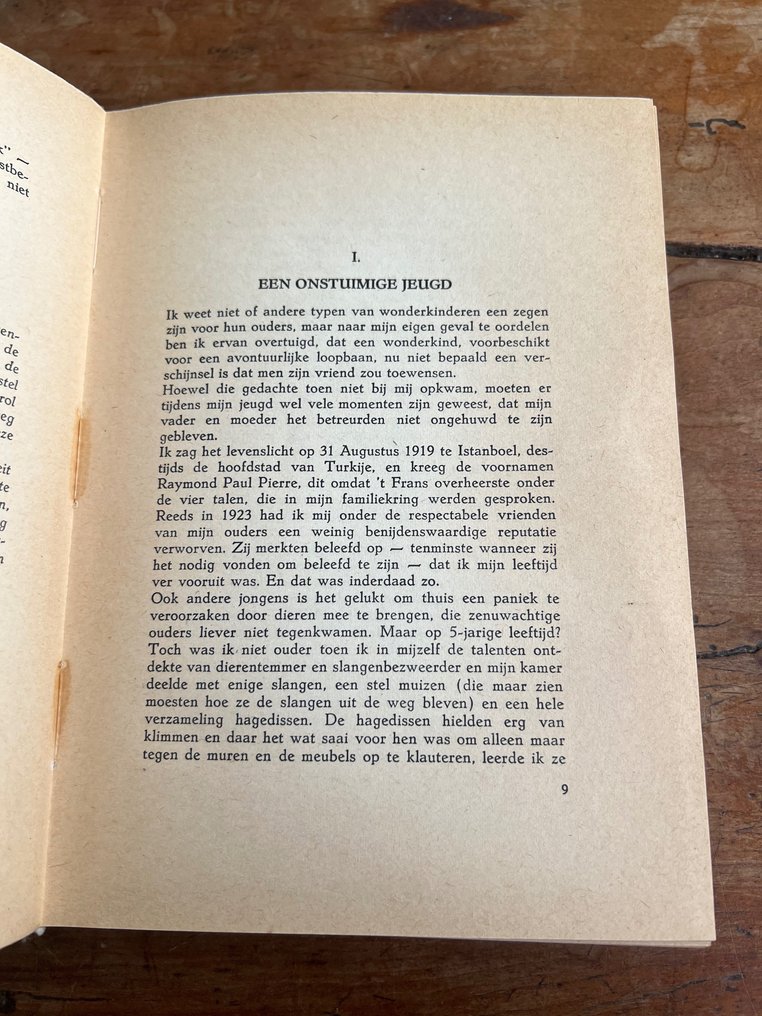
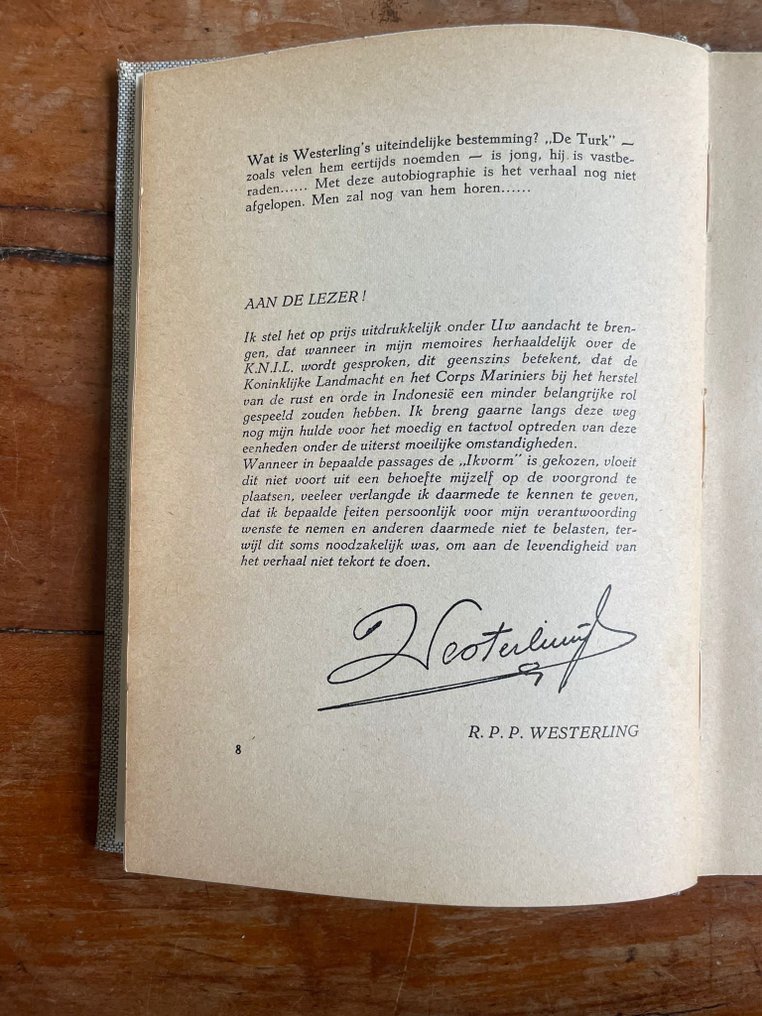
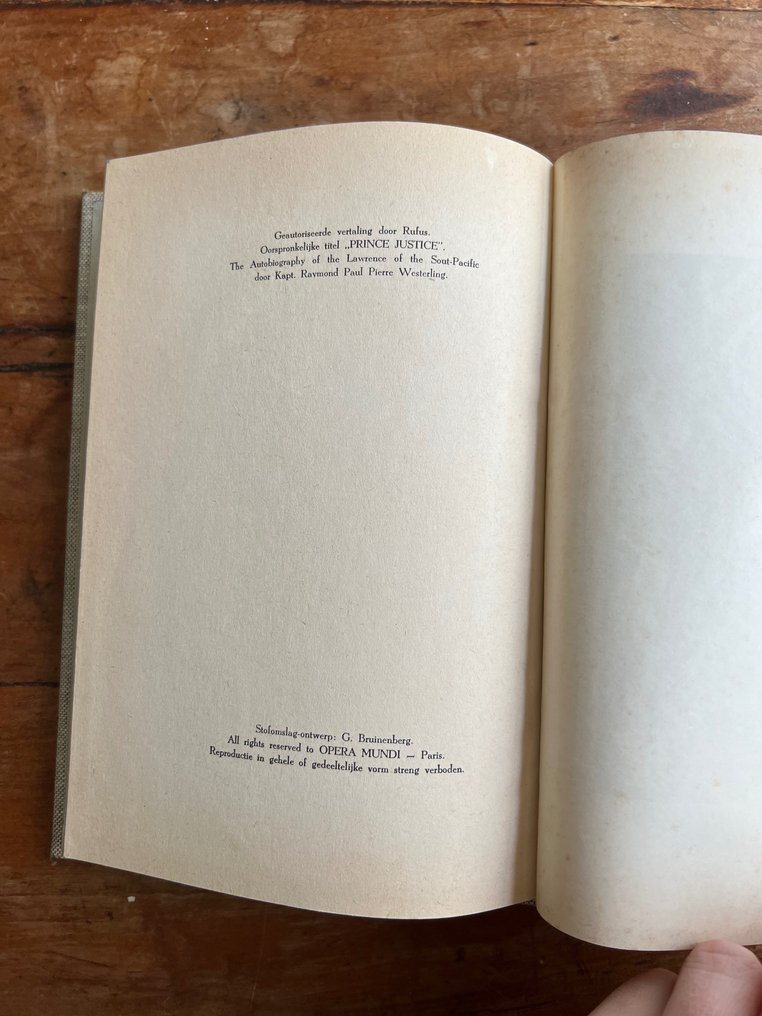
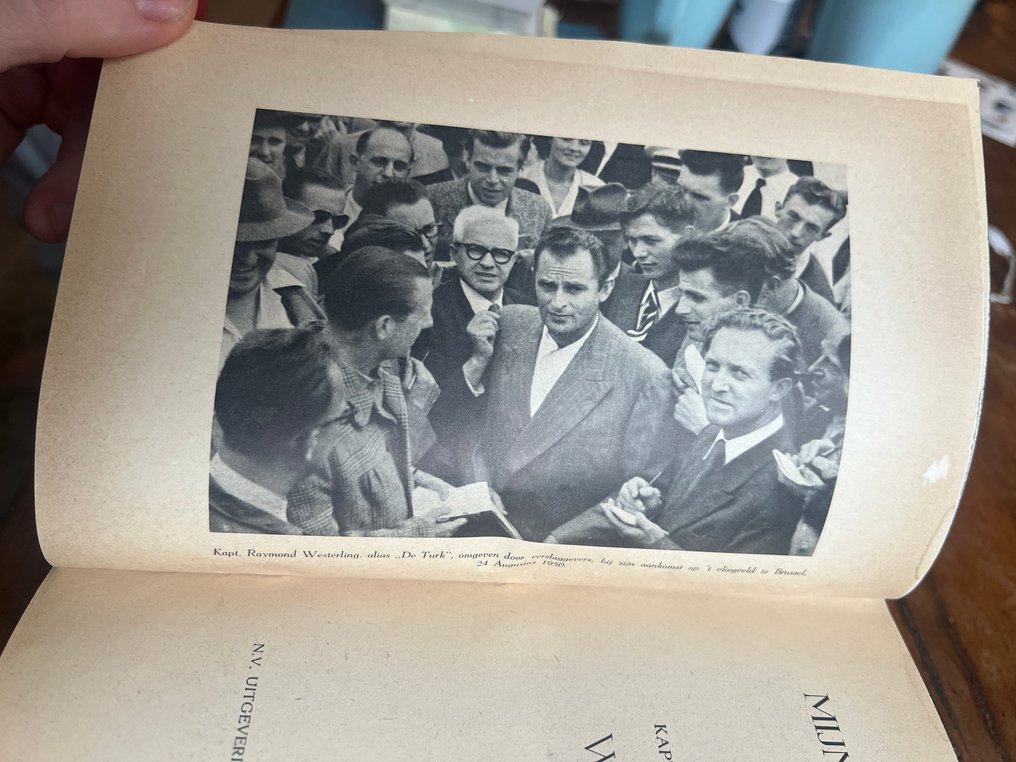
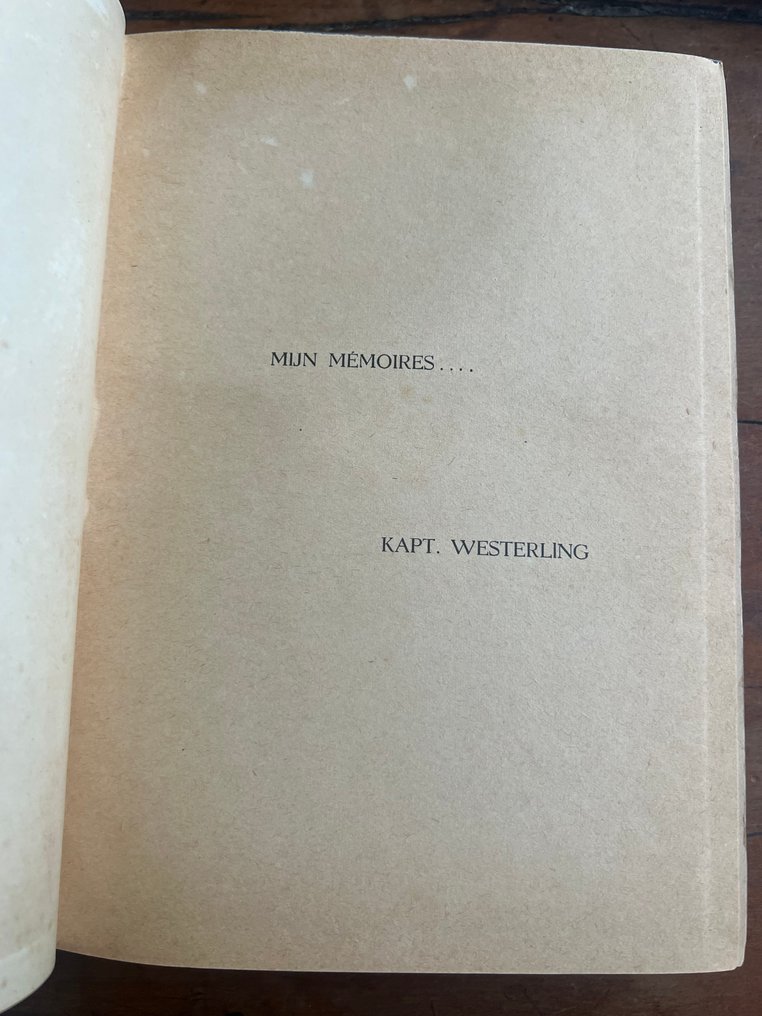
Up for auction is a rare 1st edition of the memories of the infamous Westerling and his special forces. Very confronting book about fighting the Indonesian independence warriors and his previous actions. I will let the photo's do the talking.
Great and rare memories of a extremely debated commander in military history!
Indonesian independence war
Raymond Pierre Paul Westerling (31 August 1919 – 26 November 1987) was a Greek-Dutch military officer of the Royal Netherlands East Indies Army. He orchestrated a contraguerrilla in Sulawesi during the Indonesian National Revolution after World War II and participated in a coup attempt against the Indonesian government in January 1950, a month after the official transfer of sovereignty. Both actions were denounced as war crimes by the Indonesian authorities. Born in the Ottoman Empire, his nickname was "The Turk", however Westerling was actually of Greek ethnic background.
The Indonesian National Revolution (Indonesian: Revolusi Nasional Indonesia) began shortly after Japan's capitulation on August 15, 1945, followed by the proclamation of the Republic of Indonesia on August 17, 1945, and ended with the transfer of sovereignty over the Dutch East Indies colony ( excluding Western New Guinea) by the Kingdom of the Netherlands to the United States of Indonesia in December 1949. The creation of those United States of Indonesia, however, only partially met the demands of the insurgents who had full independence proclaimed.
Shortly after the Japanese surrender on August 15, 1945, hostilities broke out between Indonesian nationalists and British Commonwealth forces who had taken strategic positions in the archipelago. In October 1945 the battle for Surabaya broke out, a city that the nationalists had to give up after bloody fighting.
No Dutch armed forces were involved in this battle. In March 1946 Dutch troops were allowed in Indonesia to take over the British positions.
The Dutch government did not recognize the Republic of Indonesia as an independent state, but regarded it as a rebellious movement within the colony of the Dutch East Indies. It should be noted that, in the Linggadjati agreement to be discussed below, the Republic had recognized the sovereignty of the Netherlands during a transitional period. In fact, it is not a war but an insurrection. In that same agreement, the Netherlands had de facto recognized the Republic.
In traditional Dutch historiography and in the Dutch media this episode is often referred to by the term 'police actions' used by the then government (also called 'police actions',[2] Indonesian: Aksi Polisionil). It was the name for two offensive operations lasting several weeks by Dutch armed forces during the Indonesian National Revolution. These operations took place on the islands of Java and Sumatra from July 21 to August 5, 1947 (first action, "Operation Product") and December 19, 1948 to January 5, 1949 (second action, "Operation Crow") and their objective was to restore Dutch authority over certain areas.[3]
The police actions are therefore not the same as - but are part of - the Indonesian Independence Struggle. This revolt mainly had the character of a guerrilla of the Indonesian nationalists against the Dutch troops. The hostilities lasted until the cease-fire in the night of 10 to 11 August 1949. In some places there was fighting afterwards, as a result of which Dutch soldiers were also killed.
During the almost four-year military presence of the Netherlands in Indonesia, approximately 5,000[1] Dutch soldiers lost their lives, about half of whom were killed in combat. The rest died as a result of illness and accidents. Tens of thousands of people were killed among the (Indonesian) Dutch civilian population, as well as among Moluccans and Chinese, as a result of acts of violence by Indonesian nationalists. On the Indonesian side, at least approximately 97,000 people were killed as a result of Dutch military action, both soldiers and civilians.[4] In addition, there was a plurality of violence between Indonesians themselves. The Madiun affair has already killed 35,000 communists.
After 1949, the struggle (apart from the coup of ex-Captain Westerling in 1950) flared up once more. That was during the hostilities preceding the handover of Dutch New Guinea in 1962.
Up for auction is a rare 1st edition of the memories of the infamous Westerling and his special forces. Very confronting book about fighting the Indonesian independence warriors and his previous actions. I will let the photo's do the talking.
Great and rare memories of a extremely debated commander in military history!
Indonesian independence war
Raymond Pierre Paul Westerling (31 August 1919 – 26 November 1987) was a Greek-Dutch military officer of the Royal Netherlands East Indies Army. He orchestrated a contraguerrilla in Sulawesi during the Indonesian National Revolution after World War II and participated in a coup attempt against the Indonesian government in January 1950, a month after the official transfer of sovereignty. Both actions were denounced as war crimes by the Indonesian authorities. Born in the Ottoman Empire, his nickname was "The Turk", however Westerling was actually of Greek ethnic background.
The Indonesian National Revolution (Indonesian: Revolusi Nasional Indonesia) began shortly after Japan's capitulation on August 15, 1945, followed by the proclamation of the Republic of Indonesia on August 17, 1945, and ended with the transfer of sovereignty over the Dutch East Indies colony ( excluding Western New Guinea) by the Kingdom of the Netherlands to the United States of Indonesia in December 1949. The creation of those United States of Indonesia, however, only partially met the demands of the insurgents who had full independence proclaimed.
Shortly after the Japanese surrender on August 15, 1945, hostilities broke out between Indonesian nationalists and British Commonwealth forces who had taken strategic positions in the archipelago. In October 1945 the battle for Surabaya broke out, a city that the nationalists had to give up after bloody fighting.
No Dutch armed forces were involved in this battle. In March 1946 Dutch troops were allowed in Indonesia to take over the British positions.
The Dutch government did not recognize the Republic of Indonesia as an independent state, but regarded it as a rebellious movement within the colony of the Dutch East Indies. It should be noted that, in the Linggadjati agreement to be discussed below, the Republic had recognized the sovereignty of the Netherlands during a transitional period. In fact, it is not a war but an insurrection. In that same agreement, the Netherlands had de facto recognized the Republic.
In traditional Dutch historiography and in the Dutch media this episode is often referred to by the term 'police actions' used by the then government (also called 'police actions',[2] Indonesian: Aksi Polisionil). It was the name for two offensive operations lasting several weeks by Dutch armed forces during the Indonesian National Revolution. These operations took place on the islands of Java and Sumatra from July 21 to August 5, 1947 (first action, "Operation Product") and December 19, 1948 to January 5, 1949 (second action, "Operation Crow") and their objective was to restore Dutch authority over certain areas.[3]
The police actions are therefore not the same as - but are part of - the Indonesian Independence Struggle. This revolt mainly had the character of a guerrilla of the Indonesian nationalists against the Dutch troops. The hostilities lasted until the cease-fire in the night of 10 to 11 August 1949. In some places there was fighting afterwards, as a result of which Dutch soldiers were also killed.
During the almost four-year military presence of the Netherlands in Indonesia, approximately 5,000[1] Dutch soldiers lost their lives, about half of whom were killed in combat. The rest died as a result of illness and accidents. Tens of thousands of people were killed among the (Indonesian) Dutch civilian population, as well as among Moluccans and Chinese, as a result of acts of violence by Indonesian nationalists. On the Indonesian side, at least approximately 97,000 people were killed as a result of Dutch military action, both soldiers and civilians.[4] In addition, there was a plurality of violence between Indonesians themselves. The Madiun affair has already killed 35,000 communists.
After 1949, the struggle (apart from the coup of ex-Captain Westerling in 1950) flared up once more. That was during the hostilities preceding the handover of Dutch New Guinea in 1962.
- 437
- 9
- 4
Mooi item goed verpakt
Ver traducciónGoed verpakt en mooi item thx 😊👍🏻
Ver traducciónDespite some delays, the item was received as described. It’s in very good condition.
Ver traducciónObjet conforme à la description. Envoi rapide
Ver traducciónalles in Ordnung wie beschrieben sehr kluge wertangabe!
Ver traducciónSuper Ware, danke gerne wieder
Ver traducciónZeer nette verzending, en goed verpakt waarvoor dank
Ver traducciónALLES PERFECT !!! AAA
Ver traducciónBien reçu en état parfait
Ver traducciónSuper! Thanks
Ver traducciónprima
Ver traducción100% verkoper
Ver traduccióneverything perfect thanks
Ver traducciónSnel en goed verpakt verzonden. Top object, onder de indruk van dit (macabere) stukje geschiedenis...
Ver traducciónUltrasnelle verzending, stevig verpakt. Zeer mooie tijdsdocument! Hartelijk bedankt! Met vriendelijke groeten, Michel.
Ver traducciónOk grazie
Ver traduccióneverything perfect as usual, thanks
Ver traduccióneverything perfect as usual, thanks
Ver traduccióneverything perfect as usual, thanks
Ver traduccióneverything perfect as usual, thanks
Ver traducciónTodo correcto.
Ver traducciónSnelle en nette levering. Boeken zijn als nieuw!
Ver traducciónOttimo oggetto, conservazione perfetta.
Ver traducción- 437
- 9
- 4
Tutto come da descrizione, venditore eccellente.
Ver traducciónAviso legal
El contenido de este lote está destinado exclusivamente a coleccionistas de objetos históricos militares. El propietario de este sitio web no tiene ningún motivo político ni otros motivos distintos del de ofrecer un plataforma en la que terceras personas puedan comprar y vender sus lotes, y no se hace responsable del contenido.
El contenido de este lote está destinado exclusivamente a coleccionistas de objetos históricos militares. El propietario de este sitio web no tiene ningún motivo político ni otros motivos distintos del de ofrecer un plataforma en la que terceras personas puedan comprar y vender sus lotes, y no se hace responsable del contenido.